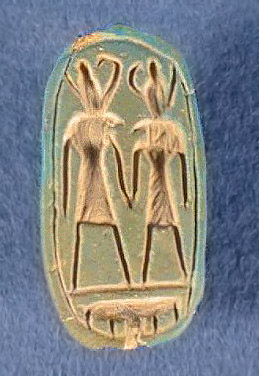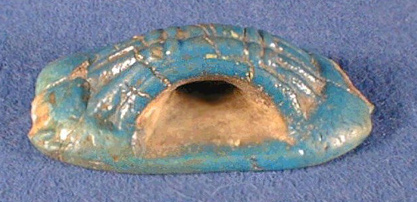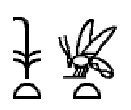
©Joan Ann Lansberry, 9-18-07

|
This picture was inspired by a chance rare rainbow sighting:
 First some thunder and rain, then some sunshine, makes rainbow
But perhaps they did... The arm position isn't right, they would have held their arms in the 'embrace' hieroglyph, like they are doing in the amulet below, but in spite of this fault, I still like this piece. |

|
From the GEM site: "The blue enamel seal takes the form of a cartouche representing Seth and Horus holding hands. The two gods with the heads of falcons are wearing the double crown of Upper Egypt and Lower Egypt. They are surmounting the hieroglyphic sign signifying gold. The handle of the seal is the transposition, in faience, of vegetable stalks tied together. The material indicates that it is probably an amulet..."
 the back side of this amulet...
Here are some more useful thoughts regarding this image: I came across the various titles of pharoahs, and narrowed in on one type, the Throne name or prenomen. Nesu-bity means 'King of Upper and Lower Egypt', but is more closely translated 'King of the Sedge and the Bee', as these are the hieroglyphs for 'nesu-bity':


(the two lords who are in him, are reconciled.)
|